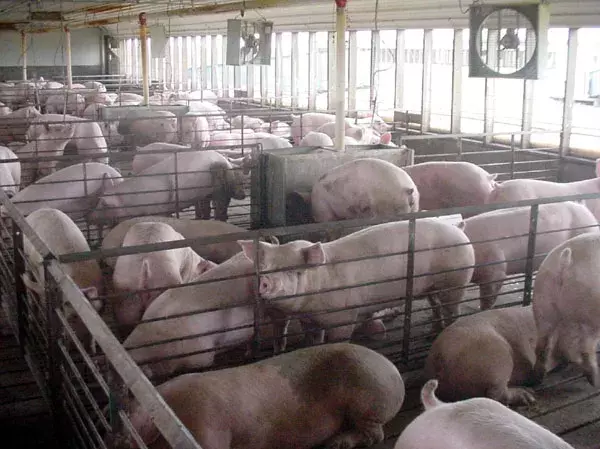Improving Indoor Air Quality in a Livestock Facility Using a Multifunction Instrument

Recently, our partner Air Quality Services posted this video showing a Kimo Instruments AMI 310 in use on a pig farm in France where it is used to measure several parameters simultaneously, including air temperature, humidity, air quality (CO/CO2), air velocity, airflow, and tachometry and pressure.
In using the AMI 310 to monitor the air quality of the livestock facility, the farm owners dramatically reduce exposure to microbes and viruses within the animal population.
While this has many benefits, not least of which being that it lowers stress on the animals, it also makes them ultimately safer for human consumption by limiting the number of antibiotics needed to keep the pigs healthy.
The monitoring of this information can also show how efficiently a mechanical ventilation system is working.
For most farms, monitoring these data would require the use of several different devices, but in this application, the AMI 310 offers an array of multiple features that each is needed to monitor overall air quality in the facility.
With the myriad measurements collected from the instrument, the farmers can compare the air quality within the facility against a set of standards and then make air quality adjustments within the livestock building based on those measurements. With the addition of a datalogger, they can also evaluate the trajectory of these environmental parameters over time and correlate this with animal behavior and health.
In using the AMI 310 to monitor the air quality of the livestock facility, the farm owners dramatically reduce exposure to microbes and viruses within the animal population. While this has many benefits, not least of which being that it lowers stress on the animals, it also makes them ultimately safer for human consumption by limiting the number of antibiotics needed to keep the pigs healthy.
But how do each of the parameters monitored by the AMI 310 affect overall animal health in this application? Let’s find out.
Temperature
An environment that runs too hot risks applying undue stress to the animals and promotes the growth of bacteria and other microbes. Animals tend to be more comfortable in environments that are cooler than a person would consider comfortable. According to the Penn State School of Veterinary Medicine, “Temperature seems to be the main environmental difference between comfortable livestock versus human environment.”
Humidity
The hygrometer feature on the AMI 310 can be used to measure relative humidity. While humidity has a few specific ramifications for overall indoor air quality, it specifically has an effect on comfort levels, just as it does for humans. As we’ve all seen on the weather report, excess levels of humidity can make high temperatures seem warmer and cold temperatures seem colder.
In this regard, adjustments to relative humidity can be used in concert with temperature changes to make minute adjustments to a facility’s environmental air quality.
Air Quality
Livestock can be a prodigious source of gases and contaminants such as ammonia, methane and carbon dioxide. And equipment can cause buildups of harmful gases such as carbon monoxide.
These air pollutants in higher concentrations can be harmful to animals and human workers alike. Thus, it’s imperative for the facility to consistently monitor the air for their presence.
Air Velocity
Accurate measurement of air velocity ensures that ventilation systems are working as designed. Comparing airspeed at inlets to airspeed within the building is a good way to determine if the ventilation system is operating at capacity.
Insufficient air velocity could signal that the livestock is not getting enough fresh air from outside sources.
Air Flow
Measurement of airflow is especially important in large facilities like the air quality in some areas may vary wildly from the air quality in others.
Only monitoring airflow at altitudes or within specific areas could result in an incomplete picture of how air currents affect the livestock population.
For example, the air quality at the floor level is likely dramatically different than that found at ceiling height. Measuring airflow helps identify areas where more air is needed to dissipate accumulated gases.
And the monitoring of airflow is a good way to determine if a ventilation system is allowing air to enter through unplanned inlets. Leaks that flow through these sources can also be entryways for pathogens and other air contaminants.
Tachometry
Using a tachometer to measure fan speed ensures fans are working at capacity and helps identify potential maintenance problems before equipment fails.
Pressure
The AMI 310’s manometer can be used to measure static pressure against atmospheric pressure to determine how effective the mechanical ventilation system is at moving air through the facility.
Summary
The air quality within a livestock facility is extremely important to the comfort and health of the animals.
An all-in-one monitoring solution like the AMI 310 can ensure that a mechanical ventilation system is working as intended while also improving overall air quality.




Add new comment